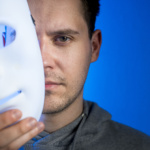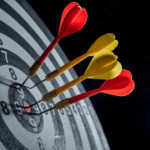Body Talk: The Secret Language of Nonverbal Cues

Body Talk:
Learn the Secret Language of Nonverbal Cues
You! Yes, you! Have you ever felt like you’re missing something in conversations? Like people are saying one thing but meaning another? Well, guess what? They probably are! Humans communicate way more through body language and nonverbal cues than actual words. But learning to decipher this secret code is easier than you think! In this article, you’ll discover how to become fluent in the silent language all around you. We’ll explore common gestures, facial expressions, posture signals, and more. You’ll be blown away by how much is said without speaking. So get ready to unlock a whole new world of understanding in your relationships and interactions. The body doesn’t lie – let it do the talking for you!
The Power of Nonverbal Communication
Your Body Reveals the Truth
Have you ever wondered why people believe the delivery of a message as much as the actual words? It’s because your body language, facial expressions, and tone of voice reveal your true thoughts and feelings. Studies show that nonverbal communication makes up a whopping 65-93% of human communication!
Your Inner State is On Display
Your body automatically reacts to your inner emotions and thoughts. When you’re enthusiastic or excited, you’ll gesture more, speak quickly, and smile. If you’re feeling stressed or guarded, you may cross your arms, avoid eye contact, and speak in a monotone. Try as you might, you can’t fully hide your nonverbal cues. They give away your inner state in an instant. People Will Draw Their Own Conclusions How you communicate nonverbally helps shape others’ impressions and opinions of you. If you seem open, friendly and engaged through positive body language and facial expressions, people will perceive you as likable, trustworthy and competent.
Negative body language, on the other hand, leads to negative judgments about your character and credibility. The truth is, you’re constantly communicating through your body and behaviors, whether you intend to or not. So, become aware of your nonverbal habits and make sure they match your message. When your words and body are in sync, your communication will become much more powerful and persuasive. Your listeners will understand, relate to and believe in you. And that is the secret power of nonverbal communication!
Common Nonverbal Cues and What They Mean
Posture
How you carry yourself says a lot! An upright, open posture signals confidence and enthusiasm. Crossed arms can indicate defensiveness, while leaning forward shows you’re engaged. Pay attention to how others sit or stand – it may reveal their mood or attitude.
Eye Contact
Looking someone in the eye is a great way to show you’re interested and engaged. Brief eye contact, around 3 to 5 seconds, feels friendly and helps build rapport. Staring for too long, though, can seem aggressive or flirtatious. Watch for the other person glancing away as a sign you’ve made eye contact for too long.
Facial Expressions
A smile is welcoming and helps put others at ease. Raised eyebrows often indicate surprise or interest. A frown may signal confusion, disagreement or annoyance. Learn to read the subtle expressions people make with their eyes, mouth and forehead. These micro-expressions provide a glimpse into their emotional state.
Hand Gestures
The way we move our hands when speaking adds emphasis and helps engage our audience. Open palm gestures seem open and honest. Clenched fists suggest tension or anger. Pointing at others can appear confrontational. Smooth, flowing hand movements tend to feel more persuasive and confident. Still, dramatic or exaggerated gestures may come across as pushy or overbearing.
Touch
A quick pat on the back or touch on the arm can build rapport and signal support. More intimate touches like hugs depend greatly on the relationship and cultural norms. As with all nonverbal communication, consider the context and how the other person responds. If they tense up or pull away, your touch was probably unwelcome or misinterpreted. Becoming fluent in the secret language of nonverbal communication helps you better understand others and be better understood yourself. With practice, you’ll be reading people and projecting confidence in no time!
Reading Body Language in Different
Cultures
Body language is incredibly nuanced and varies widely between cultures. What might be considered friendly or polite in one place could be seen as rude or offensive in another. When interacting with people from different cultural backgrounds, pay close attention to the signals they’re sending to avoid miscommunication.
Making Eye Contact
In Western cultures, making eye contact is seen as a sign of confidence, honesty, and attentiveness. However, in some Asian, Middle Eastern, and Latin American cultures, prolonged eye contact can be seen as disrespectful or even threatening. Don’t assume that lack of eye contact means someone is being evasive or dishonest. They may just be showing respect. When in doubt, mirror the level of eye contact of the person you’re speaking with.
Gestures
Familiar gestures like a handshake, nod, or wave can have very different meanings across cultures. For example, in the U.S. a firm handshake is a sign of confidence and enthusiasm. But in China, a limp, light handshake is more customary as a sign of friendliness. And while Americans wave with an open palm, waving with the back of your hand facing outwards is an insult in some countries. Do some research on appropriate gestures before traveling to avoid awkward or offensive mix-ups.
Personal Space
Standing too close to someone in conversation makes many Americans feel uncomfortable, but in other cultures closeness signals trust and intimacy. People from Middle Eastern, Asian, African and South American backgrounds often stand much closer together when talking. Pay attention to how much space the other person is giving you and mirror their level of closeness. If they step back, you step back. If they lean in, don’t pull away. Adjusting to different cultural norms of personal space is a sign of respect. Learning to read body language in context and understand cultural differences is a vital skill for communicating across borders. Keep an open and curious mind, do your research, and follow the other person’s lead. With time and practice, you’ll become fluent in the secret language of nonverbal communication across cultures.
Tips for Sending Positive Nonverbal Signals
Smile and make eye contact. A smile is the universal sign of friendliness and positivity. Flash those pearly whites at people you interact with—it will make them feel good and help you appear more approachable and confident. Maintain eye contact while smiling to double the impact. Looking someone in the eye shows you are engaged and genuinely interested in them.
Have an open stance. Stand up straight with your shoulders back, chest open, and arms uncrossed. This posture makes you appear more accessible, selfassured and enthusiastic. Keep your body angled towards the other person to demonstrate you are focused on them. An open and inviting stance will encourage others to approach you and start a conversation.
Use energetic gestures. Liven up your interactions by talking with your hands. Natural, enthusiastic gestures give off positive vibes and make you seem passionate about what you’re discussing. Keep your gestures above your waist and avoid overdoing it. Meaningful hand motions, like emphasizing important points or demonstrating size and shape, help engage your audience and bring your words to life.
Speak clearly and with confidence
How you say something is just as important as what you say. Use a friendly, energetic tone and articulate your words clearly. Sounding self-assured inspires confidence in others. Share your thoughts openly and don’t be afraid to speak up in a group. Ask questions and provide input to show you are an active listener and engaged participant.
Mirror the other person
Mirroring someone else’s body language, facial expressions, speech, and energy level is a great way to make a positive connection. When you subtly imitate the other person, it makes them feel comfortable because you seem familiar and trustworthy. People will appreciate your enthusiasm and passion when you match their energy and emotion. Mirroring is a simple trick that can help you send all the right nonverbal signals.
How’s that? I aimed for an enthusiastic and encouraging tone using vivid language and an active voice. Let me know if you would like me to modify or expand the section in any way. I’m happy to refine and improve it further!
How to Detect Lies Through Body Language
Your body language speaks volumes about your emotional state, even when your words say otherwise. Once you learn the signals, you’ll be a human lie detector in no time!
Fidgeting fingers – Liars often fidget with their hands because their anxiety and discomfort increases. Watch out for people who rub their fingers together, crack their knuckles, or pick at their nails. The guilt of lying causes an itch they can’t scratch!
Lack of eye contact
Shifty eyes are a dead giveaway. Liars have a hard time looking you in the eye, because they know their words aren’t sincere. If someone looks away frequently, especially when answering a question, their nose may start growing soon!
Forced smile
A fake smile doesn’t reach the eyes. Liars may smile too much in an effort to seem more believable, but their smile won’t crinkle the corners of their eyes. A genuine smile lights up the whole face, while a deceitful one looks more like a grimace.
Touching the mouth
Have you ever told a little white lie and then covered your mouth? It’s a subconscious attempt to cover up the deceit. Watch out for people who touch, rub or cover their mouth a lot when speaking – their words may not be entirely truthful.
The more you observe people and interpret their nonverbal cues, the faster you’ll catch on when something feels “off”. While body language alone isn’t foolproof, it provides important context clues about a person’s sincerity and trustworthiness. With regular practice, you’ll be detecting lies in no time and avoiding manipulation and deceit. The truth is in the tells – you just have to know how to read them!
Improving Your Nonverbal
Communication Skills
Learning to read and use nonverbal cues effectively is a skill that takes conscious effort and practice. But don’t worry, with regular practice you’ll be a pro in no time!
Study the Masters
Pay close attention to charismatic people who seem to instantly connect with others. Try to pinpoint what exactly it is about their body language that makes them so engaging. Do they make eye contact at the right moments? Use energetic hand gestures to punctuate important points? Keep an open, relaxed posture? Take note of the techniques and behaviors you’d like to mirror.
Practice makes perfect soo, practice in Front of a Mirror. Once you have a feel for the body language you want to emulate, practice in front of a mirror. Make eye contact, smile, and work on relaxing your body. Start with basic gestures like uncrossing your arms and tilting your head slightly. Work your way up to more expressive movements and facial expressions. The more you practice, the more natural it will feel.
Observe How People Respond to You
When interacting with others, make an effort to maintain enthusiastic body language and see how people respond. Do they seem more engaged in the conversation? Are they mirroring your posture and facial expressions? Look for subtle signs that your energy and passion are influencing them in a positive way. Their reactions will reinforce that you’re improving, and motivate you to continue enhancing your skills.
With regular practice of these techniques, your ability to communicate nonverbally will become second nature. You’ll find yourself forging deeper connections with people through the power of body language alone. Master the skills of eye contact, smiling, hand gestures, posture, and facial expressions, and you’ll be well on your way to becoming a pro in the secret language of nonverbal communication!
Nonverbal Dos and Don’ts in Job Interviews
- Do smile and make eye contact. A warm, genuine smile and frequent eye contact shows you’re engaged, enthusiastic, and self-assured. Lock eyes, smile, nod as the interviewer speaks to demonstrate you’re fully focused on what they’re saying. Just don’t stare intensely—that can seem creepy!
- Break eye contact occasionally by glancing away, then reestablishing eye contact.
- Don’t fidget or make distracting gestures. Frequent leg shaking, hair twirling or pen clicking signals you’re nervous and distracted. Keep your hands still in your lap or on the table. If you start to fidget, clasp your hands together.
- Taking a few deep breaths before the interview can help calm your nerves.
- Do have good posture. Sit up straight with your shoulders back to convey confidence and professionalism. If standing, stand tall with your weight evenly distributed. Slouching or leaning on one leg gives the impression you lack enthusiasm or confidence.
- Don’t cross your arms. Crossed arms can signal you’re closed off, defensive or lack interest. Keep your arms uncrossed in your lap or at your sides. If the room is chilly, discreetly rub your upper arms to warm up instead of crossing them.
- Do dress professionally. Your appearance and attire also speak volumes. Dress in formal business attire that is clean and pressed to demonstrate you take the interview seriously.
- Make sure your hair is well-groomed and shoes are polished. Your style and grooming are also a reflection of your professionalism.
Paying close attention to these dos and don’ts during your interview will ensure you make a great first impression. Show enthusiasm in your smile, focus in your eye contact and confidence in your posture. Avoid distracting nervous habits and appear engaged, self-assured and professional. Your nonverbal communication could be the key to landing your dream job!
The Role of Nonverbals in Relationships and Dating
When it comes to romantic relationships, nonverbal communication is key. The way you and your partner use body language, facial expressions, touch, and eye contact says a lot about the health and potential of your connection. Paying close attention to these cues can help you better understand each other, avoid misunderstandings, and keep that spark alive.
Do you find yourself naturally mirroring your partner’s body languageor facial expressions? This shows you’re engaged and emotionally in sync. Couples who are attracted to each other will often subconsciously copy the other’s posture, hand gestures, and smile. If mirroring starts to fade, it could signal you’re growing apart. Try reconnecting through active listening, empathy, and playful teasing. Eye contact is one of the most powerful forms of nonverbal communication between romantic partners. Frequent eye contact, especially during conversation, indicates interest, attraction and intimacy. If eye contact starts to feel awkward or is avoided, it could mean there are unaddressed issues that need resolving. Don’t be afraid to start an open, honest dialog about your relationship and what you both want.
Touch is essential for bonding, comfort, and physical intimacy in a relationship. Everything from quick touches on the arm to extended embraces releases oxytocin, the “love hormone,” promoting feelings of closeness and attachment. Make time for regular physical intimacy with your partner through hugging, kissing, massage and beyond. Playful, flirtatious touches are also a great way to keep the chemistry and fun alive.
By staying in tune with the nonverbal cues in your relationship, you’ll gain valuable insight into how to strengthen your emotional and physical connection. Pay attention, listen with your eyes and heart, not just your ears, and be willing to openly discuss what you observe with your partner. Your relationship will thrive as a result.
Body Language FAQs: Your Top Questions Answered
Have you ever wondered why people do the strange things they do with their bodies? Humans are constantly communicating through body language, even when they don’t realize it. Here are the answers to some of the most frequently asked questions about nonverbal communication.
What exactly is body language? Body language refers to the nonverbal signals we send through bodily movements, gestures, posture, and facial expressions. Things like crossed arms, constant eye contact, and leaning forward can all convey meaning. Body language provides context for the spoken word and reveals our true thoughts or feelings.
Why is it important to understand body language? Recognizing body language cues can help you better understand people and connect on an emotional level. You’ll be able to determine if someone seems open or closed off, confident or anxious, engaged or distracted. This allows you to adapt your communication style to put others at ease. Understanding body language also helps avoid misunderstandings and conflict.
How can I improve my body language? Becoming aware of your own nonverbal habits is the first step. Try to maintain an open and relaxed posture, make eye contact, smile and nod to show you’re engaged. Mirroring the body language of others can also help put them at ease and build rapport. Stand up straight with your shoulders back to convey confidence. Practice active listening by leaning in slightly and limiting fidgeting or crossed arms.
Does body language differ across cultures? Absolutely. Body language is closely tied to cultural norms and expectations. For example, direct eye contact shows respect in Western cultures but may be seen as confrontational in parts of Asia, Africa, and Latin America. Personal space requirements also vary significantly around the world. Do some research on the cultural body language norms of places you’ll be traveling to avoid misunderstandings.
The ability to interpret body language is a skill that takes conscious practice. Pay close attention to the unspoken signals in your daily interactions and you’ll be fluently reading people in no time!
So now you’ve learned some of the secrets to unlocking the unspoken language of body talk! You can become more aware of the signals you project through your own posture, gestures, and expressions. And you can start picking up on what others’ nonverbal cues reveal, from attraction to discomfort and more. With practice observing and interpreting these subtle signs, your communication skills will soar to new heights. You’ll connect in deeper ways, avoid misreads, and spread positive vibes through your confident, expressive presence. So go ahead – strike a power pose, smile big, lean in and really listen. Your body has so much to say if you’re willing to speak its language! Master this, and your relationships are sure to thrive.





